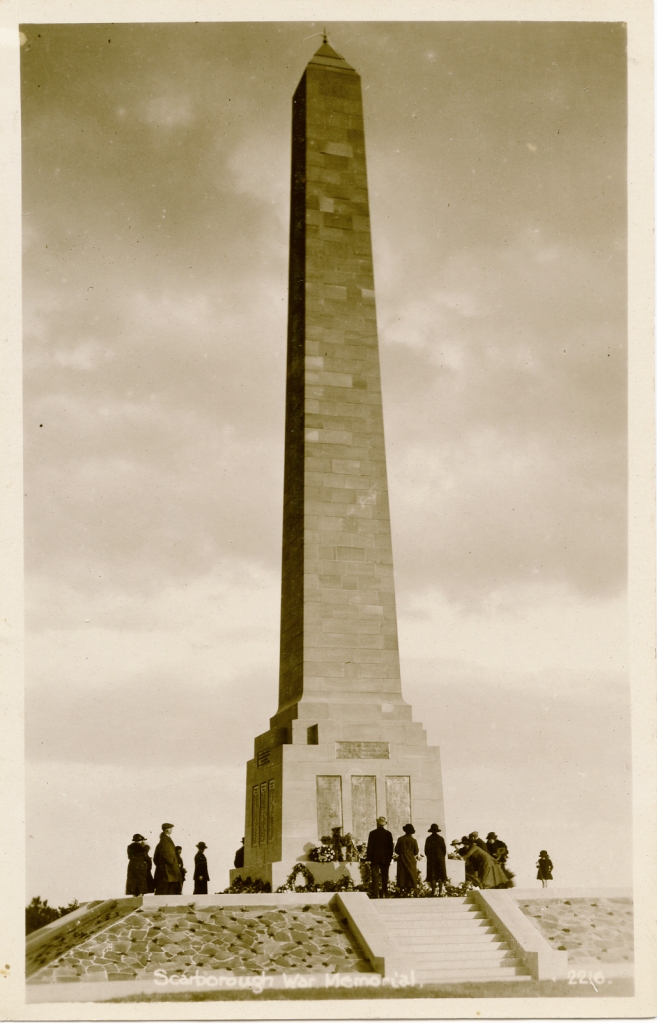By Jo Faulkner, Record Assistant
In the aftermath of the First World War, almost every town and village in the United Kingdom had lost members of their communities. Such unprecedented figures meant that the repatriation of all war dead would not be possible. The graves of loved ones would be far away and many casualties were never found, therefore a large number of families had no physical location to visit to mourn and honour their dead.
In London in 1920, the Cenotaph was erected at Whitehall and the grave of the ‘unknown warrior’ was buried in Westminster Abbey, creating a focus for the collective grief of the nation. However, far away from London in Counties such as Yorkshire, those memorials would seem distant and there was a need to address and commemorate losses at a local and more accessible level.
War Memorial Committees were formed to plan and raise funds for the provision of memorials in their own areas. As the country struggled to recover from war, no government funding was available. The Committees, often formed within parish councils, relied on the generosity of individuals through subscriptions. Groups such as churches, businesses and schools sometimes chose to create their own memorials.

Memorials in North Yorkshire vary from small plaques to entire buildings or recreation grounds. In some instances towns were able to commission well-known sculptors and architects to design grand architectural monuments, while in locations where funds were low (often smaller communities), existing village features were re-purposed as war memorials, for example in Langcliffe a cross was added to an existing water trough, while the residents of Aysgarth chose a street lamp.

These memorials remain important today, representing a focal point for both private and collective remembrance. The names of casualties from the Second World War and more recent conflicts have been added to many local war memorials. Our memorials link the past to the present. They enable people to remember the sacrifices of those who died, or participated in conflicts and can be an important source of information for people in understanding those sacrifices.
War memorials are a significant part of our cultural heritage. They are a useful resource for local and family history. Surviving records documenting the creation of our war memorials can provide some insight into those people in our communities who were involved with the planning, funding and building of memorials.

There are many interesting war memorials in North Yorkshire. The following series of posts will focus on some of the records available at the North Yorkshire County Record Office to highlight a few of them and in particular, the people of the local communities who made them possible.
There have been a number of projects and publications in recent years, (particularly since the centenary of the outbreak of World War One in 2014) relating to war memorials and in particular researching the people named on them. There are many useful resources for researchers who wish to discover more about those listed on the memorials. The reference section below provides details of some.
References and further reading
War Memorials Register held by the Imperial War Museum
